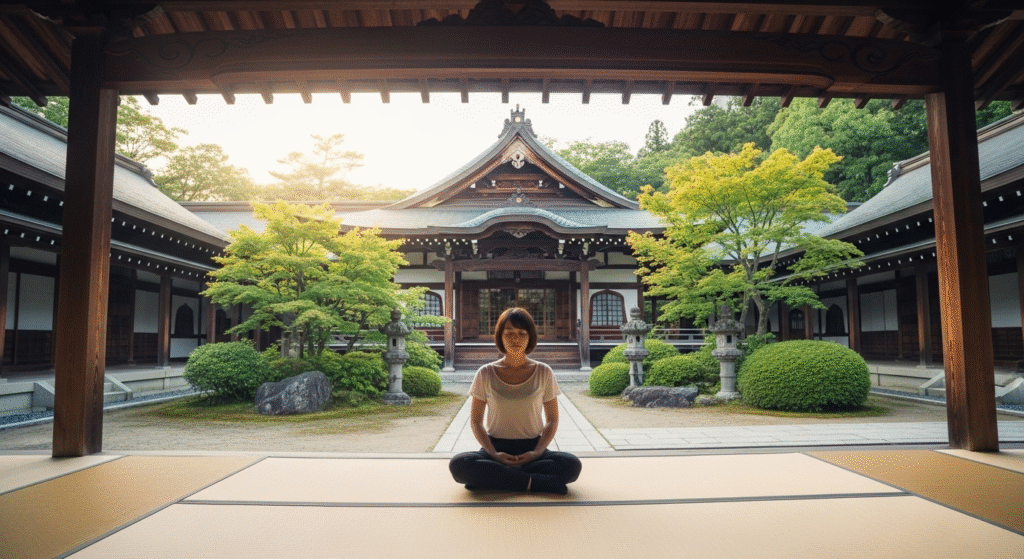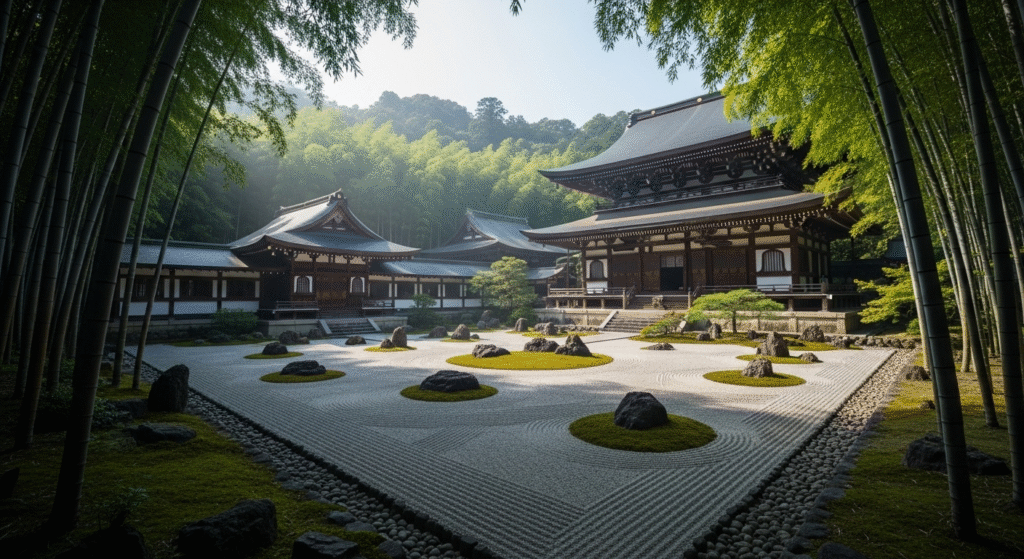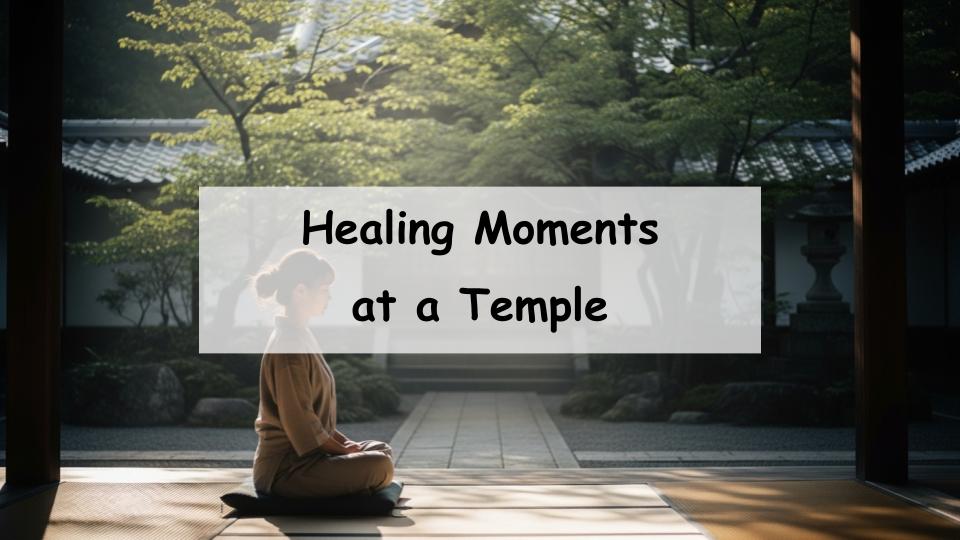Are you struggling with depression and feeling like every day is an uphill battle? Do you find yourself searching for a sense of peace outside of hospitals or counseling sessions? You’re not alone. Many people living with depression are seeking gentle, natural ways to ease emotional pain.
The truth is, spending time in the tranquil environment of a temple can provide subtle yet powerful support on the path to healing. The calm atmosphere and spiritual setting help calm the mind and create space for inner peace.
This article introduces three temple-based mindfulness practices that can aid mental recovery: sutra copying (shakyo), zazen (sitting meditation), and nature immersion. Each method is explained with step-by-step guidance, so even beginners can give them a try. If you’re looking for an alternative way to care for your heart alongside medical treatment, exploring the temple experience may be just what you need.
- What Is Depression? Understanding Its Causes and Symptoms
- 3 Heart-Care Practices You Can Do at a Temple
- Why Temples Are Effective for Emotional Healing
- Tips for Visiting Temples for Mental Wellness
- Facing Depression: What Else You Should Keep in Mind
- FAQ
- A Message from the Guide
What Is Depression? Understanding Its Causes and Symptoms
Common Symptoms of Depression
Depression affects people differently, but typical symptoms include persistent sadness, fatigue, lack of motivation, and difficulty sleeping. You may feel emotionally numb or unable to enjoy activities you once loved.
Various Causes of Depression
Depression can be triggered by multiple factors, including stress, trauma, genetics, and hormonal changes. Life events like losing a loved one or job can also lead to depressive episodes.
The Risks of Ignoring Depression
Without proper care, depression can worsen over time. It may affect your physical health, relationships, and ability to function in daily life. Early intervention is key.
3 Heart-Care Practices You Can Do at a Temple
1. Soothe the Mind Through Sutra Copying (Shakyo)

How to Practice Sutra Copying and Which Texts to Use
Shakyo involves carefully tracing Buddhist sutras with a brush or pen. Beginners often start with the Heart Sutra. The act itself requires focus, which helps shift your attention away from worries.
Mental Benefits of Concentrated Practice
Copying sutras encourages mindfulness and brings a calming rhythm to your thoughts. This meditative focus can reduce anxiety and promote inner clarity.
2. Calm the Breath and Mind Through Zazen Meditation

Basic Posture and Guidelines for Zazen
Zazen is seated meditation, traditionally practiced cross-legged with a straight back. Keep your gaze lowered and breathe slowly through your nose. Don’t try to stop your thoughts—just observe them.
How Beginners Can Start Comfortably
Many temples offer guided zazen sessions. Chairs or cushions are often available for those who struggle with sitting on the floor. Feel free to ask questions or join a beginner-friendly class.
3. Refresh Your Mind Through Nature Connection

Sensing Temple Nature with All Five Senses
Temple grounds often include gardens, trees, water features, and seasonal flowers. Walking slowly and mindfully through these spaces can restore a sense of connection and peace.
The Psychological Effects of Walking and Forest Bathing
Simply strolling among trees or sitting under a temple bell tower can have restorative effects. Studies show that time spent in nature lowers stress hormones and boosts mood.
Why Temples Are Effective for Emotional Healing
Psychological Stability Offered by Quiet Spaces
Temples are designed to offer silence, simplicity, and spiritual energy. These elements create a safe environment where your mind can rest.
The Role of Spiritual and Religious Connection
Even if you aren’t religious, temples allow you to engage with something greater than yourself. Rituals and chants can be comforting, and you can choose the level of participation.
Reclaiming “White Space” in a Hectic Life
In modern life, we rarely allow ourselves moments of stillness. Temples provide precious white space—time without expectations or productivity—which supports emotional healing.
Tips for Visiting Temples for Mental Wellness
How to Choose the Right Temple for You
Look for temples that are open to the public and offer wellness programs. Some Buddhist temples list activities like meditation, sutra copying, or nature walks on their websites.
Check What Events or Experiences Are Offered
Before visiting, check whether reservations are needed for certain activities. Events like “Temple Stays” or mindfulness retreats can offer structured support.
Take It Slow and Listen to Your Inner Rhythm
There’s no right way to experience a temple. Take breaks, rest when needed, and honor your own pace. Even a short visit can bring calm.
Facing Depression: What Else You Should Keep in Mind
Combine Temple Time with Medical Support
Temple practices are helpful, but not a replacement for medical treatment. They are best used as a complement to therapy or medication.
The Importance of Support from Others
Talk to trusted friends or family members. Let them know how you feel and ask for support. Having people who understand can make a big difference.
Don’t Carry the Burden Alone
You don’t have to suffer in silence. Reach out to mental health professionals, spiritual mentors, or support groups. There is help out there.
FAQ
Do I Need to Make a Reservation for Temple Experiences?
Some activities require reservations, especially zazen or overnight stays. Contact the temple beforehand to confirm.
Is It Okay to Visit Even If I Don’t Follow the Religion?
Yes. Most temples welcome visitors regardless of religious background. Respect the space and feel free to participate at your comfort level.
Are There Temples That Are Easy to Visit?
Yes. Many urban and suburban temples are open to walk-in visitors and offer casual experiences without strict rules or expectations.
This article aims to show how temples can offer meaningful, low-pressure ways to care for mental health. If you or someone you love is living with depression, consider exploring one of these peaceful practices at a local temple.
A Message from the Guide

Once you step into a temple, the atmosphere feels different. Even if you don’t join any events or ceremonies, simply visiting, observing the expressions of the Buddha statues, and putting your hands together can provide healing and a refreshing change of pace.








Comment